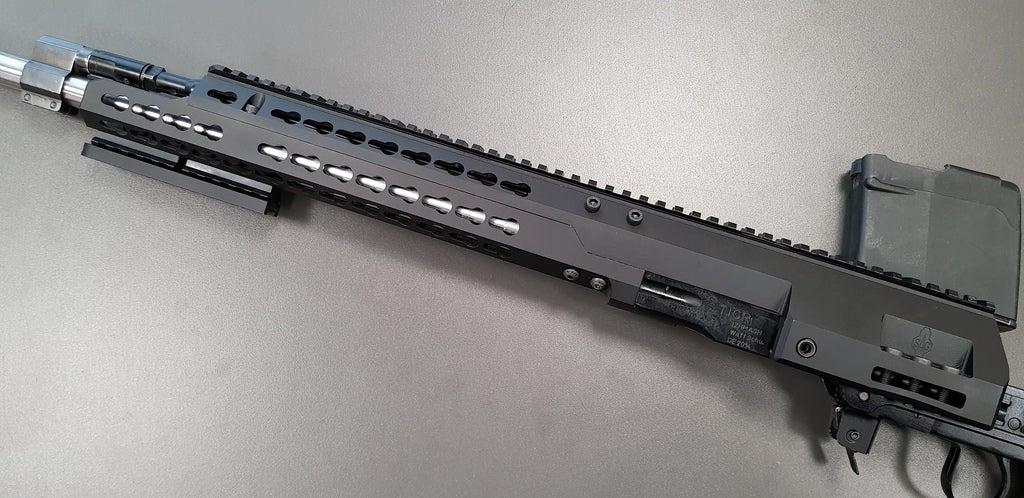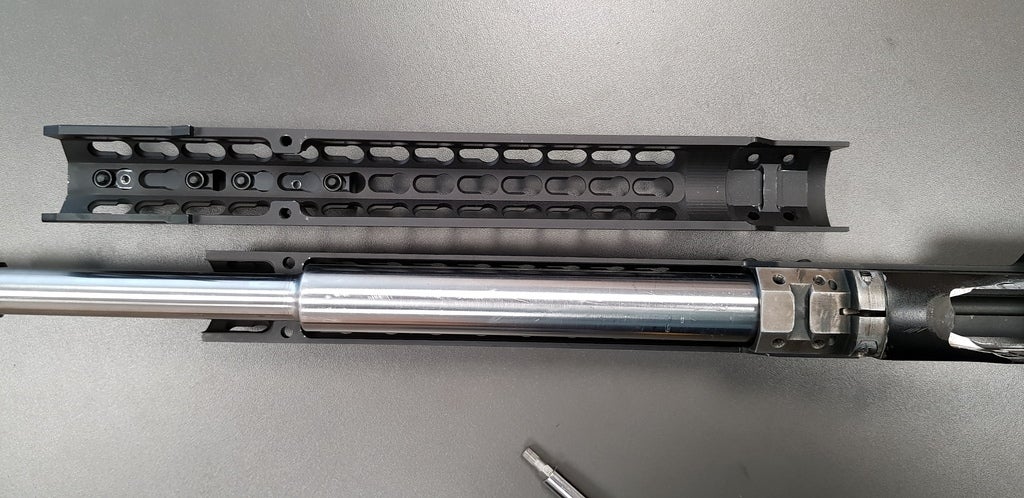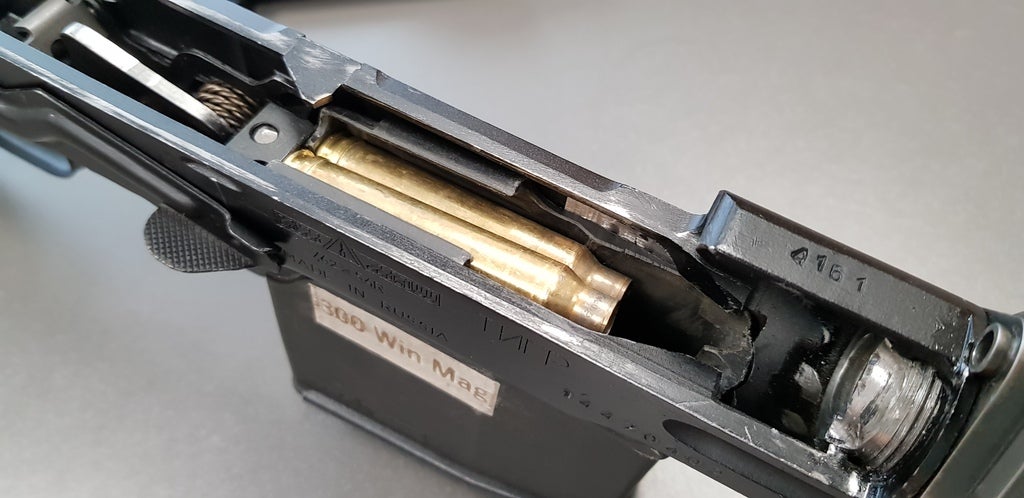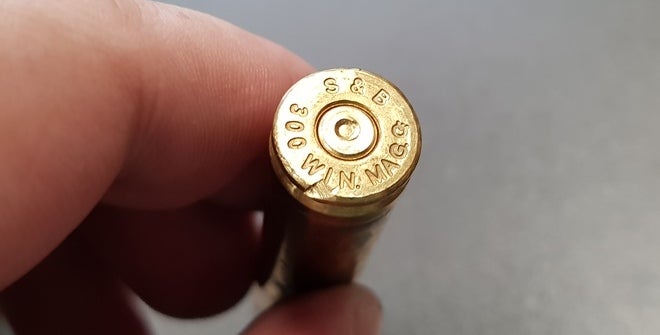About a year ago, we reported about the SVD rifle chambered in .300 Winchester Magnum. This rebarreling project was done by the Sureshot Armament Group, a company well known for making different accessories for the SVD platform. In order to give a more in-depth explanation, Valentin Vlasenko, the owner, co-founder and chief engineer of the company, published an article telling about the details of this project: how and why they started it, what challenges they faced and what decisions made etc.

It is interesting to note that many gunsmiths and smaller companies (e.g. Tromix Lead Delivery Systems) start such projects not necessarily pursuing a commercialization goal but driven by the passion of making in steel and wood (or polymer and aluminum!) that cool idea they came up with. Another reason to start such a project can be the coincidental availability of spare parts that are perfectly suitable for any particular project. In the case of Valentin Vlasenko, the reason to start the project was probably a combination of factors: his will to do it, spare time, access to the needed machinery and the fact that he had a Tiger rifle (the civilian version of the SVD), a suitable barrel blank and Tiger-9 magazines laying around.

At first, Valentin thought about the acquisition of a Tiger-9 rifle to make it a host for this project. Tiger-9 is the version of Tiger/SVD rifle chambered in 9.3x64mm Brenneke. This rifle could theoretically be a better host because it feeds from wider magazines which are needed to accommodate the .300 Win Mag cartridge. However, they discovered that unlike the SVD/Tiger which has screwed in barrels, the barrel of Tiger-9 is attached to the receiver via pressing and pinning it in place much like the barrels of AK rifles are installed. Pressing out the barrel and making a new one that would be pressed in sounded like a bit complicated process and they decided to see if the SVD/Tiger chambered in 7.62x54R is capable to be converted into a .300 Win Mag rifle. The examination of the receivers of Tiger and Tiger-9 rifles showed that they are pretty much identical in terms of the material thicknesses and other main dimensions. The main difference of the Tiger-9 was the enlarged magazine well designed to accommodate the wider magazines. Opening up the SVD magazine well was something much easier for the designers and they made a final decision of using the Tiger rifle as a host for this project.

Valentin mentions that if they chambered the converted rifle in .300 WSM, it could be a much easier project because the .300 WSM also fits the SVD bolt face and unlike the .300 Win Mag, it fits the standard SVD magazines (five rounds, single stack) thus eliminating the need to machine the magazine well and use Tiger-9 magazines. At any rate, they decided to use the .300 Win Mag as a much more widely available, military-proven and affordable cartridge.

For this project, they used a 28″ .30 caliber button rifled barrel blank with a twist rate of 1:8.5″. In order to make a barrel blank suitable for the SVD platform, they threaded the breech portion (M25x1.5 thread pitch), contoured the barrel, cut the chamber, drilled the gas port and machined the extractor relief on the breech face.

At the beginning of the project, they have already decided that they will use the SAG SVD Chassis Mk1. That chassis basically determined the barrel contour. The barrel starts as a relatively thick one having a 27mm (a little over an inch) diameter and at the point where the top and bottom halves of the SAG chassis are attached together, the barrel diameter is decreased to 22mm (.866″).

Note the step of the barrel profile right where the screw holes of the chassis are
Such adaptation of the barrel to the chassis was done to ensure that the barrel is free floated. Interesting to note, that the barrel nut which is mounted onto the receiver and holds the chassis, also doesn’t touch the barrel.

Note the gap between the barrel and the nut that holds the SAG chassis
The muzzle of the barrel was threaded with the 5/8-24 thread pitch and they fitted the rifle with an AAC muzzle brake. The final barrel length was 26.5″.

One of the key factors that made this project so attractive was that the bolt of the SVD rifle does not need to be altered at all. It perfectly fits the .300 Win Mag cartridge and works properly (feeds, extracts, ejects), too. Despite the 7.62x54mmR and .300 Winchester Magnum have different rim/headspace design (rimmed and belted), their rim diameters (.570 and .532 respectively) are close enough to make the bolt work with both.

Along with the bolt, the bolt carrier is also unaltered. Below you can see a video showing the work of the SVD BCG with the new barrel installed.
Because the barrel diameter at the gas block mounting portion was larger for this build compared to the original SVD, they had to machine a new gas block. Interestingly, they borrowed the piston adjustment mechanism from the original SVD gas block and used it in the new one.

Next operation was to open up the magazine well to make it take the larger Tiger-9 magazines. They milled the magazine well to the needed width, slightly cut the magazine latch and added some material to the front recess to which the front lug of the magazine hooks. You can see these changes in the following three images.



Below you can find two videos showing the first test fires of the SVD chambered in .300 Win Mag. In the first video, the gas port is not drilled yet, that’s why it doesn’t cycle the action.
Everything sounds easy and perfect so far, doesn’t it? But as you know designing a gun, even modifying one is full of surprises and new challenges. After the first test fire, they found out that the action was working too violently. The indicative of that was the severe case rim damage caused by the ejector.

In order to solve this problem, they had to drill and tap a hole in the gas block and install a set screw to be able to tune the action and further decrease the amount of gasses that are vented to the gas piston.

Interesting side note: this particular tiger rifle was a German export one. According to German laws, it must be different than the military rifle that’s why this one has a 5mm (about .200) longer op rod and a corresponding recess on the bolt carrier. You can see that in the video embedded below.
After shooting about 600 rounds from this rifle, they recorded 1 MOA accuracy with hand loaded ammunition using Lapua brass, 67 grain of RS70 powder and Lapua Scenar 220 bullets. The average muzzle velocity was 2,855 fps (870 m/s).
During the test firing, they also discovered that the quality of Tiger-9 polymer magazines leaves a lot to be desired. It would hold four rounds of .300 Win Mag but if you try to load the fifth one, the magazine would bulge out. They plan to redesign the shape of the magazine well to accept AICS mags which supposedly should perform better than the Tiger-9 magazines.
That’s the story of building the SVD chambered in .300 Winchester Magnum.
Many thanks to Valentin Vlasenko for telling the details of this fascinating project and allowing us to use the images!
 Your Privacy Choices
Your Privacy Choices
